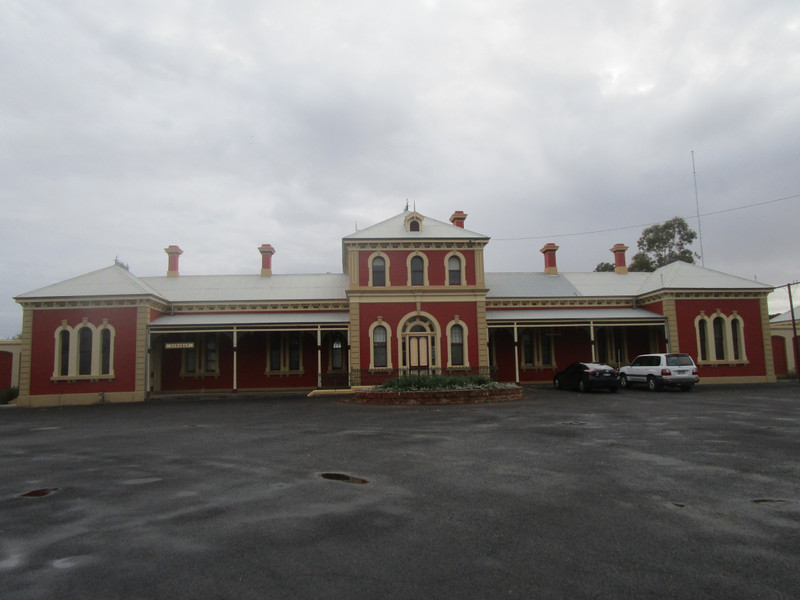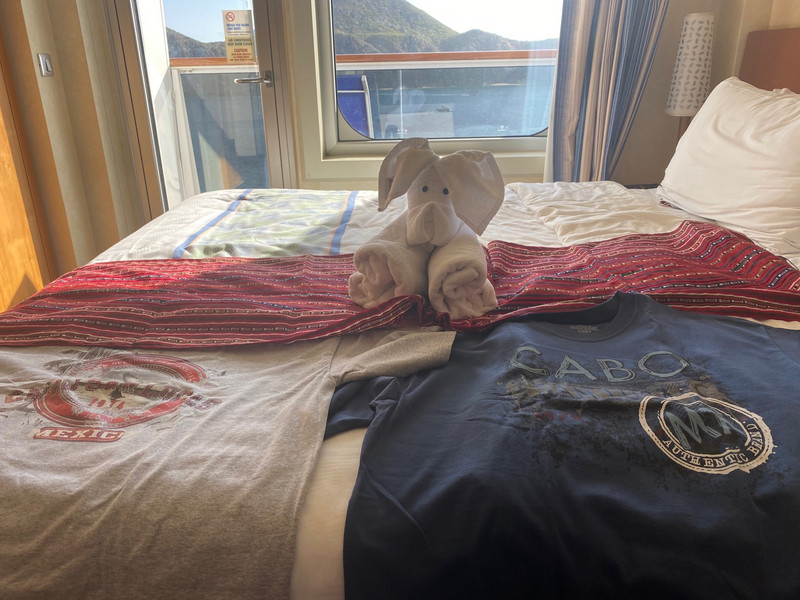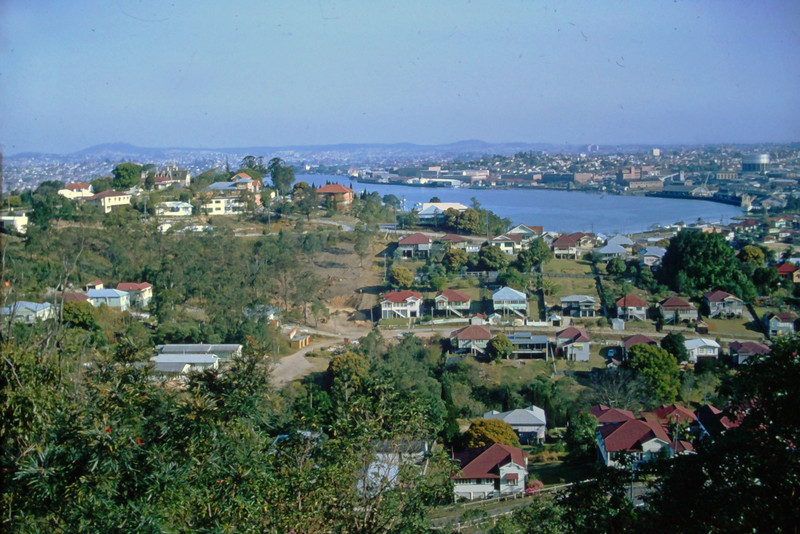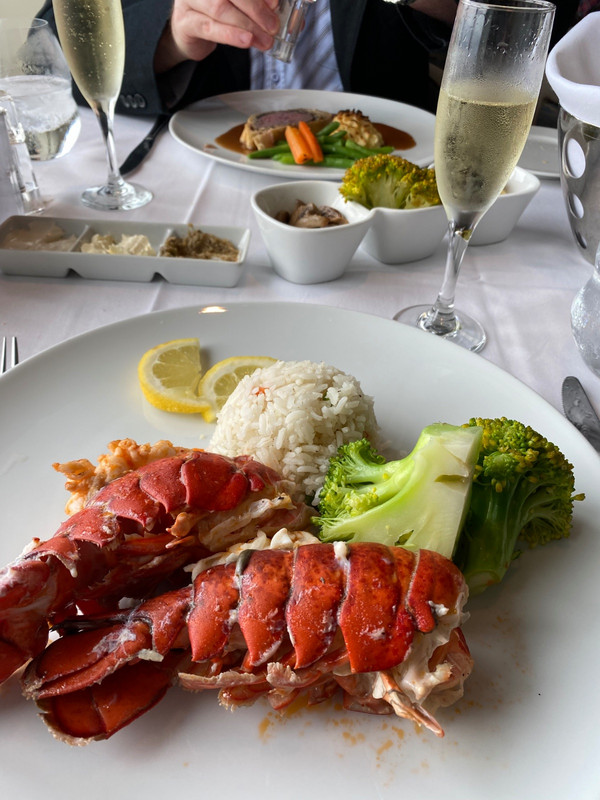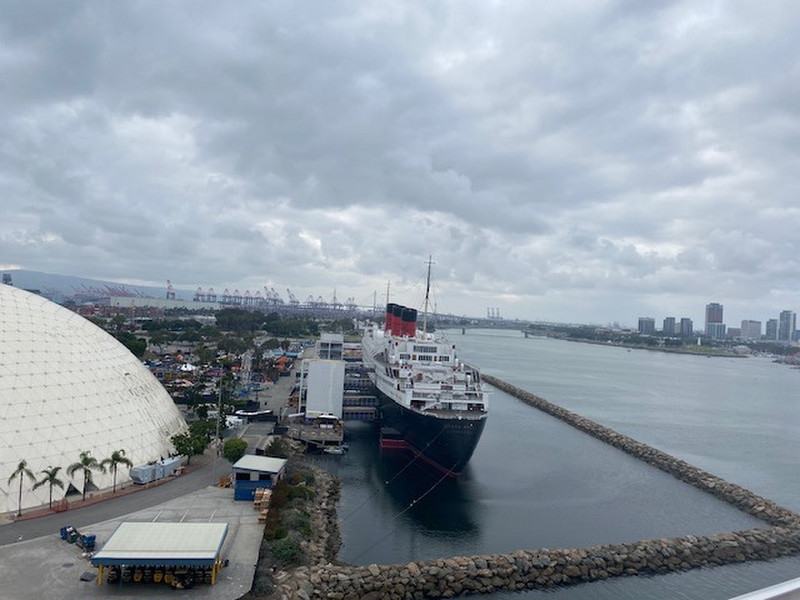We crossed the VIC/NSW border at Echuca/Moama and after a brief stop for lunch and a refuel at Moama continued on to Hay. It was an easy 355kms (200miles) from home and being the end of a public holiday weekend the bulk of the traffic was all heading toward Melbourne.
The Cobb Highway follows The Long Paddock – an historic web of tracks and trails linking the stock grazing lands of NSW – and it takes in part of the Hay Plains. The tourist information booklets will tell you the landscape is unique – we both agreed it is boring, being totally flat and covered in drab grey/brown saltbush – very uninspiring.
As we approached Hay we passed by 2 large cotton gins; tufts of crisp white cotton edged the highway as they became tangled in the roadside grasses. It looked to be a pretty avenue of We thought it strange though to see the gins looming out of the landscape as there were no obvious plantations.
camp is at Sandy Point Reserve alongside the waterway. It is quite large and has many spacious areas to set up camp in. There are quite a few travellers taking advantage of the free camp.
We had planned on staying 3 nights but with the weather not sounding too special for the next few days we have decided to move on after just one night. The name of Sandy Point is quite appropriate because the soil is very soft and it was quite slushy under foot & wheel whilst packing up even after the few light showers we had overnight.
Before leaving though we went to Dunera Museum which is located in the old Hay Railway Station. Dedicated to Australias prisoners of war, it was disappointing to find it currently closed as it is undergoing refurbishment. This seems to be a recurring thing wherever we travel – we think we have found something of interest only to find it closed for repairs. Never mind, the building faade was stunning as was the nearby Stationmasters Cottage.
interactive display of the history of shearing in this country. It housed a lot of memorabilia as well as The Australian Shearers Hall of Fame where names of gun shearers and pioneers of the industry are inscribed on a set of stainless steel or pewter hand shears.
If Australia lived on the sheeps back in its glory days then it has to be said that the shearing shed was run and ruled by the camp cook. We watched a short video of one such cook and she was someone who held her ground with rowdy shearers - there would be no cry of Duck on the Pond*** when she was around! Apparently a shed was only as good as its cook and she was one tough woman. In the video she said I said to them if you have a problem with my food then tell me. Ill do what I can to rectify any problem, but if I dont find a problem then Ill part your eyes with me cleaver! I daresay the shearers found all her meals as they should be. ***Duck on the Pond is the expression called to alert shearers that a female
Lunch back at the caravan and then by early afternoon we set off for our next free camp – Hillston, which is just 155km further up the road.
